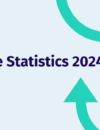
It’s 2025, and DEI (Diversity, Equity, and Inclusion) has become an easy scapegoat, blamed for everything from natural disasters to mechanical failures. The term has been weaponised, and distorted into a symbol of bureaucracy, quotas, and misguided ideology, leading many companies to shelve their initiatives or rebrand them under new, more palatable names. To its loudest critics, it’s the enemy of meritocracy, when in reality, it’s about expanding opportunity, not eliminating excellence.
But walking away from DEI doesn’t make the need for fairer, more inclusive workplaces disappear. The reality is that workplace inequities remain stark, and they’re not just abstract concepts, but tangible barriers that shape careers, opportunities, and workplace cultures.
The data is clear: white candidates are 1.7 times more likely to be hired than candidates from other racial/ethnic groups. [1]
In terms of workplace culture, underrepresented groups are faring worse than their colleagues when it comes to workplace culture: 91% of workers report experiencing discrimination, while 94% say belonging at work matters to them. Yet, support for DEI initiatives has dropped to just 52% in the US, reflecting a broader decline.[2]
The challenge we face now isn’t just about reputational damage to DEI – it’s about effectiveness. Too often, organisations have relied on performative efforts, symbolic gestures, and short-term interventions rather than the systemic work required to create lasting change. The question isn’t whether DEI should continue, but how we move beyond rhetoric to create the structural change needed to make real impact.
Where DEI has fallen short
Many organisations launched DEI initiatives in the wake of George Floyd’s murder in 2020, with a sense of urgency but little long-term vision. The result? Patchy implementation, vague commitments, and a lack of real structural change. Five years on, the cracks are visible:
Superficial training – Most DEI workshops have failed to shift workplace behaviour in meaningful ways.
Confused messaging – The perception that DEI benefits only certain groups, rather than improving workplaces for all, has fuelled resistance and scepticism.
Token gestures over real investment – Too many companies have relied on volunteer-led employee resource groups (ERGs) or PR-friendly but ultimately meaningless social media statements, without embedding equity into their decision-making processes.
Lack of leadership buy-in – Without executive sponsorship and clear accountability, DEI work has remained an HR initiative rather than a core business function.
Failure to track impact – Many organisations made bold statements about diversity, but few established meaningful metrics to track pay equity, promotion rates, or workplace inclusion.
None of this means that DEI itself is flawed – but it does mean that how it has been implemented needs to change.
From Symbolism to Structural Change
Companies making real progress are moving beyond tick-box exercises and taking a systems-first approach to DEI. John A. Powell’s targeted universalism offers an example of a different way forward; rather than relying on one-size-fits-all policies or group-specific initiatives, it establishes a shared goal for everyone while addressing specific barriers different groups face:
Shifting from “fixing” groups to fixing systems – Traditional DEI efforts often frame underrepresented groups as needing special assistance, which can create resistance and has contributed significantly to the backlash we see today. Targeted universalism focuses on removing structural barriers that prevent all employees from advancing, rather than applying narrow solutions to specific groups.
Avoiding one-size-fits-all solutions – Different employees face different challenges, requiring tailored strategies instead of generic policies. For example, a company aiming for fair career growth must recognise that the challenges faced by women in leadership differ from those of Black professionals in tech, disabled employees navigating accessibility, or working parents who may need flexibility. Generic diversity training won’t solve this – only structural changes will.
Reducing backlash by making DEI a collective gain – expanding recruitment pipelines and implementing bias-free hiring benefits everyone, not just a few.
Driving real, measurable change – Transparent promotion pathways, pay equity, and leadership development should be tracked – not just promised.
Moving from gestures to accountability – DEI can’t be a one-off initiative; it must be embedded into hiring, pay structures, and workplace culture.
Breaking Hiring Patterns to Build Inclusive Leadership
One of the biggest barriers to workplace equity is who gets hired and promoted, and developed as leaders. At Druthers Search, we work with organisations to challenge traditional hiring patterns, ensuring that diverse talent is not just considered but meaningfully integrated into leadership teams.
We see time and again that organisations claim to want diversity, yet still default to familiar hiring patterns -prioritising candidates with the same academic backgrounds, the same companies and the same career trajectories.
If companies are truly committed to inclusion, they need to rethink how they assess talent – moving beyond the familiarity of what they know and embracing the value that candidates from entirely different backgrounds can bring. Hiring from a broad range of backgrounds doesn’t just fill a quota; it enriches decision-making, broadens perspectives, and strengthens company culture.
For startups in particular, it’s easy to fall into the trap of pattern-based hiring – where one successful hire unconsciously sets the blueprint for future candidates. A common example is when a company brings in someone from a consulting background who excels in their role. That success can create a hiring shortcut, where similar profiles become the default choice. But the problem is that Consulting firms often lack diversity, meaning this pattern reinforces barriers around education and access rather than expanding the talent pool.
True inclusion requires breaking these cycles, challenging assumptions about what makes a “good hire,” and actively seeking talent with fresh perspectives that drive innovation and long-term success.
Does DEI Need a Rebrand?
Some argue that DEI’s reputation is too damaged to be salvaged, and that renaming it might help avoid controversy. But a name change won’t address the deeper issue.
Today we can see many companies invested in DEI for the wrong reasons – reacting to social pressure rather than integrating it into their long-term business strategy. Without a clear purpose, many of these efforts became hollow, performative, or simply ineffective. The issue isn’t branding – it’s execution.
That’s why the next phase of workplace equity must go beyond just diversity statements and training days.
For DEI to be effective, it must be:
Systemic, not symbolic – Fairness should be woven into every aspect of talent management.
Accountable to real outcomes – Progress should be measured through hiring, retention, and leadership representation.
Inclusive for everyone – When fairness is embedded into workplace systems, all employees benefit.
What Comes Next?
The backlash against DEI is loud, but the demand for fair, thriving workplaces isn’t going anywhere. Companies that fail to take it seriously will lose top talent. The real challenge isn’t whether DEI should continue – it’s how we make it work.
[1] https://info.paradigmiq.com/meeting-the-demands-of-an-evolving-workforce
[2] https://www.pewresearch.org/short-reads/2024/11/19/views-of-dei-have-become-slightly-more-negative-among-us-workers/#:~:text=Workers’%20views%20on%20DEI%20in,percentage%20points%20since%20last%20year.





